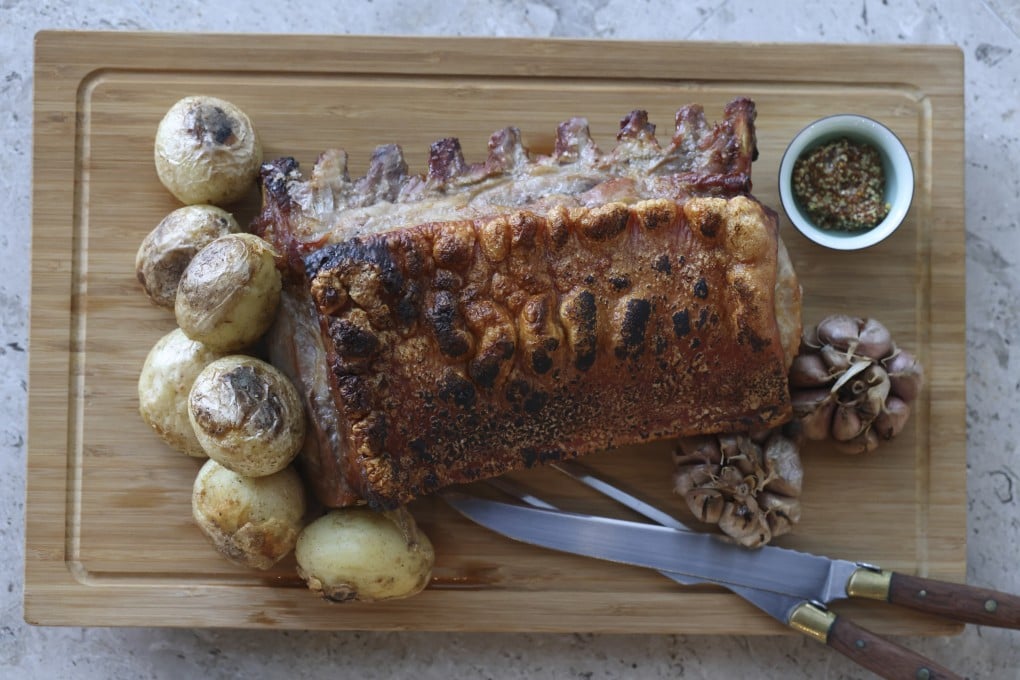How to make five-spice roasted pork rack with crispy crackling and meat that’s moist – the secret’s in the advance preparation
- Two days of advance preparation is the secret to ensuring the meat is well seasoned and that the skin will be crisp when cooked
- Use a marinade injector or meat spikes for brining, and a meat thermometer to ensure the rack is cooked to perfection

When I cook a holiday meal for a crowd, I like to lay out a buffet of several main dishes and plenty of sides, so everyone has a lot of choice.
For vegetarians, I make quiche, salad and protein-rich tofu dishes that (I hope) the omnivores will enjoy too. For everyone else, I grill some chicken and roast one large cut of meat, to serve as the centrepiece of the buffet.
Five-spice roasted pork rack
This recipe took several attempts before I got it right. The problem was that pork rack has a thick, dense “eye” – the loin – that’s covered on one side by the bones, which makes it difficult for the salt and other seasonings to penetrate. My normal practice of pre-salting a roast didn’t work.

Brining the meat works better: because the salt and sugar are dissolved in water, it is easier for them to penetrate the meat. A warning though: this takes time. You need at least one day to brine the meat and another to let it air-dry, so the skin will be crisp when cooked. This means you will need to start the preparations a minimum of two days in advance. The crackling is so important that I cook an extra piece of skin, so everyone will have enough.
To help the brine penetrate, you can use either a marinade injector (the best option) or a meat spike. The former looks like an enormous syringe, and injects the brine deep into the meat; the latter looks like a medieval weapon – it is a piece of plastic or wood embedded with long, sharp spikes – and you use it to pierce the meat all over.
You can also use sharp metal skewers to poke deep into the meat. The meat spike is also good for piercing the skin of the pork loin, to help it crisp up when roasted. Air-drying the skin, then brushing it with vinegar and using a salt and egg white crust, also help achieve a great crackling crust.
If you can’t find a meat spike (the ones sold at Chinese restaurant supply shops are best), corn holders – two-pronged utensils used when eating corn on the cob – will work at a pinch, although the spikes aren’t nearly as long and they are quite fragile, so you will need several pairs.